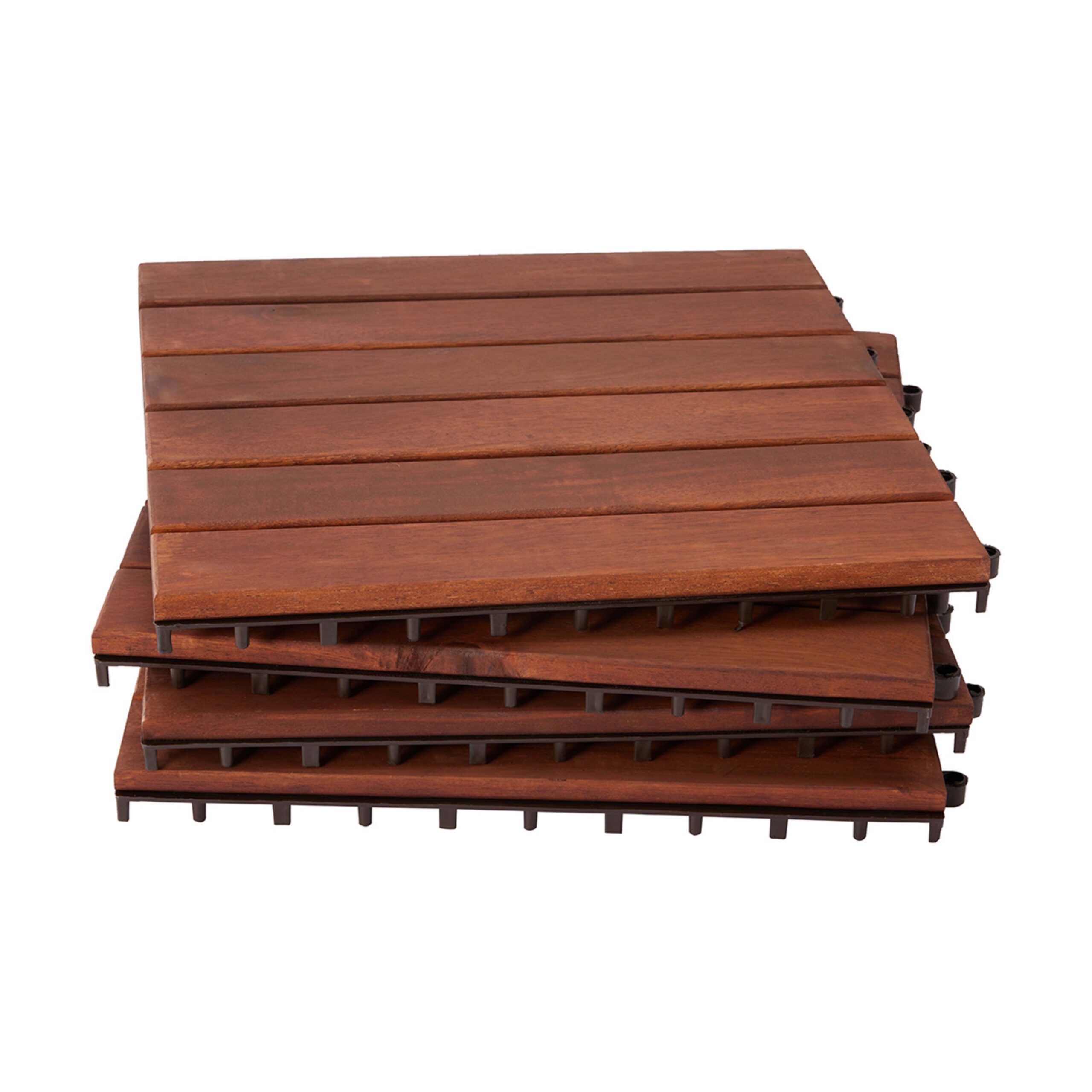If you want a quick and fashionable method of reviving your outside area, decking tiles could be the answer to your prayers. Decking Tiles that are easy, affordable, and appealing to use in order to renew patios, balconies, rooftops, or garden paths without having to undertake complicated building or installing it yourself are a lifesaver for tenants and home owners. Whether you’re aiming for a sleek modern look or a warm natural finish, decking tiles make outdoor makeovers incredibly simple.
What Are Decking Tiles?
Decking tiles are pre-fabricated square or rectangular panels constructed of wood, composite materials, or blended materials. They have a secure base—usually plastic—that permits the tiles to fit together, forming a stable surface without screws, nails, or adhesives. The advantage of interlocking deck tiles is that they merely snap together, and installing them yourself is effortless.
These tiles can be laid directly over concrete, stone, or other flat surfaces, providing a fresh, clean look without major groundwork. Best of all, they can be easily removed or repositioned, making them ideal for renters or anyone who wants a temporary yet beautiful upgrade.
Types of Decking Tiles
When considering decking tiles for your outdoor area, it’s essential to know your options. The three main types are:
1. Composite Decking Tiles
These tiles consist of a mixture of recycled plastic and wood fibers. Composite decking tiles are highly resistant, moisture-proof, UV-resistant, insect-proof, and mildew-resistant. They do not warp, crack, or splinter over time, and therefore, they are a low-maintenance option ideal for use throughout the year outdoors. Their contemporary look is ideal for modern homes and minimalistic looks.
2. Wooden Decking Tiles
For those who love the look and feel of the natural wood, wooden decking tiles provide rustic beauty and warmth. They’re typically manufactured using weather-resistant woods such as teak, acacia, or eucalyptus. Wood tiles can live for several years if given proper care in the form of sealing and periodic oiling, providing a warm and natural feel to your outdoor space.
3. Plastic or Rubber-Based Tiles
These are the cheapest and are commonly used in playgrounds or roof spaces. They’re lightweight, weatherproof, and commonly recycled material-based. They’re less fashionable than wood or composite-based, but they’re useful where grip and cushioning are requirements.
Advantages of Using Interlocking Deck Tiles
1. Easy Installation
One of the greatest benefits of interlocking deck tiles is how easy they are. There is no need for tools, nails, or adhesive. Even a novice DIY person can remodel their patio or balcony in a few hours.
2. Permanence and Portability
The tiles are either installed permanently or temporarily. If you are moving houses or want to re-design your area, removing them and reusing them elsewhere is easily possible.
3. Low Maintenance
Composite Decking Tiles particularly need very little maintenance. A simple wash with water and soap is usually sufficient to maintain them in like-new condition. Wooden decking tiles, although more classic in their look, just need sporadic oiling and sealing.
4. Great Aesthetics
Decking tiles are available in a variety of styles, finishes, and patterns. From a checkerboard design, straight pattern, to a diagonal design, the layout versatility allows you to be as stylish as you wish.
5. Long-Lasting and Weatherproof
Contemporary decking tiles, particularly composites, are designed to last. Rain, sun, or snow—these tiles can take anything. Their raised base also ensures good drainage and no water pooling.
Where Can You Use Decking Tiles?
Decking tiles are ideal for a variety of outdoor uses:
- Balconies: Warm up and texture an urban balcony without drilling or harming the floor.
- Patios: Transform a concrete patio into an upscale lounge space in an instant.
- Rooftops: Transform a bland rooftop into a warm outdoor haven.
- Poolside Spaces: Several composite decking tiles are slip-resistant, perfect for moist spaces.
- Garden Paths: Develop pathways through your backyard or garden without installing permanent stones.
Tips to Select the Proper Decking Tiles
Measure your area correctly prior to purchase. This will help you buy the right amount.
- Verify compatibility: Ensure that the interlocking mechanisms are the same if you intend to combine brands.
- Take weather exposure into account: In exposed locations, composite decking tiles may be more appropriate because they can withstand weather conditions.
- Maintenance preference: Select wooden decking tiles if you can tolerate seasonal maintenance, or use composite tiles for a maintenance-free option.
- Budget wisely: Wooden tiles tend to be more expensive upfront but provide an upscale touch; composites prove to be superior value in the long run.
Final Thoughts
Decking tiles present a revolutionary means for transforming outdoor spaces quickly, economically, and beautifully. If you’re designing a peaceful balcony oasis, replete patio renovation, or desire to add style to a garden walk, these tiles are a functional and aesthetically pleasing solution. Read This
With the choices of interlocking deck tiles, composite decking tiles, and wood decking tiles, there’s a solution for every taste, budget, and level of devotion. Ditch the inconvenience of conventional decking and give this convenient, chic alternative a try your outdoor space will appreciate it.
